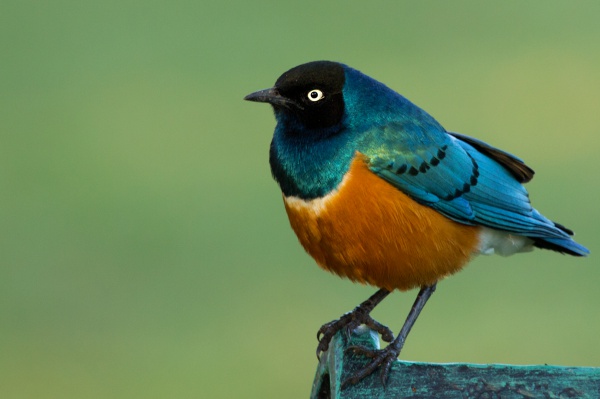Facts About Superb starling
The superb starling, formerly known as Spreo superbus, is a striking member of the starling family. These vibrant birds inhabit various regions of East Africa, including Ethiopia, Somalia, Uganda, Kenya, Sudan, and Tanzania. They thrive in diverse environments, from savannas and thornbush regions to open woodlands, lakeshores, gardens, and even cultivated fields. They can be found at elevations ranging from sea level up to 2,650 meters.
What sets superb starlings apart is their colorful appearance. They measure about 18 to 19 cm in length and display black heads with shimmering blue-to-green backs, upper breasts, wings, and tails. Their distinctive red-orange bellies are separated from their blue breasts by a prominent white band. Juveniles, in contrast, have duller feathers and brown eyes that transition to grayish-white as they mature. Their calls consist of a mix of trills, chatters, and harsh sounds, with a long, loud song complemented by softer midday phrases.
Superb starlings are ground feeders, primarily consuming insects such as grasshoppers, beetles, termites, ants, and flies, as well as worms, grains, fruits, and small berries. Known for their sociability, they often gather in groups and seem relatively unafraid of humans. Their breeding season varies by location: from October to February in Ethiopia and from March to June in Somalia. They build spherical nests from grasses and twigs, typically located in bushes, medium-height trees, or rock crevices. Female starlings lay 3-4 eggs that are incubated for twelve days. Both parents share the responsibility of caring for the young.
A key feature that distinguishes superb starlings from Hildebrandt's starlings is their pale creamy-white eyes and the distinctive white breast band found in adult superb starlings.

 Uganda
Uganda